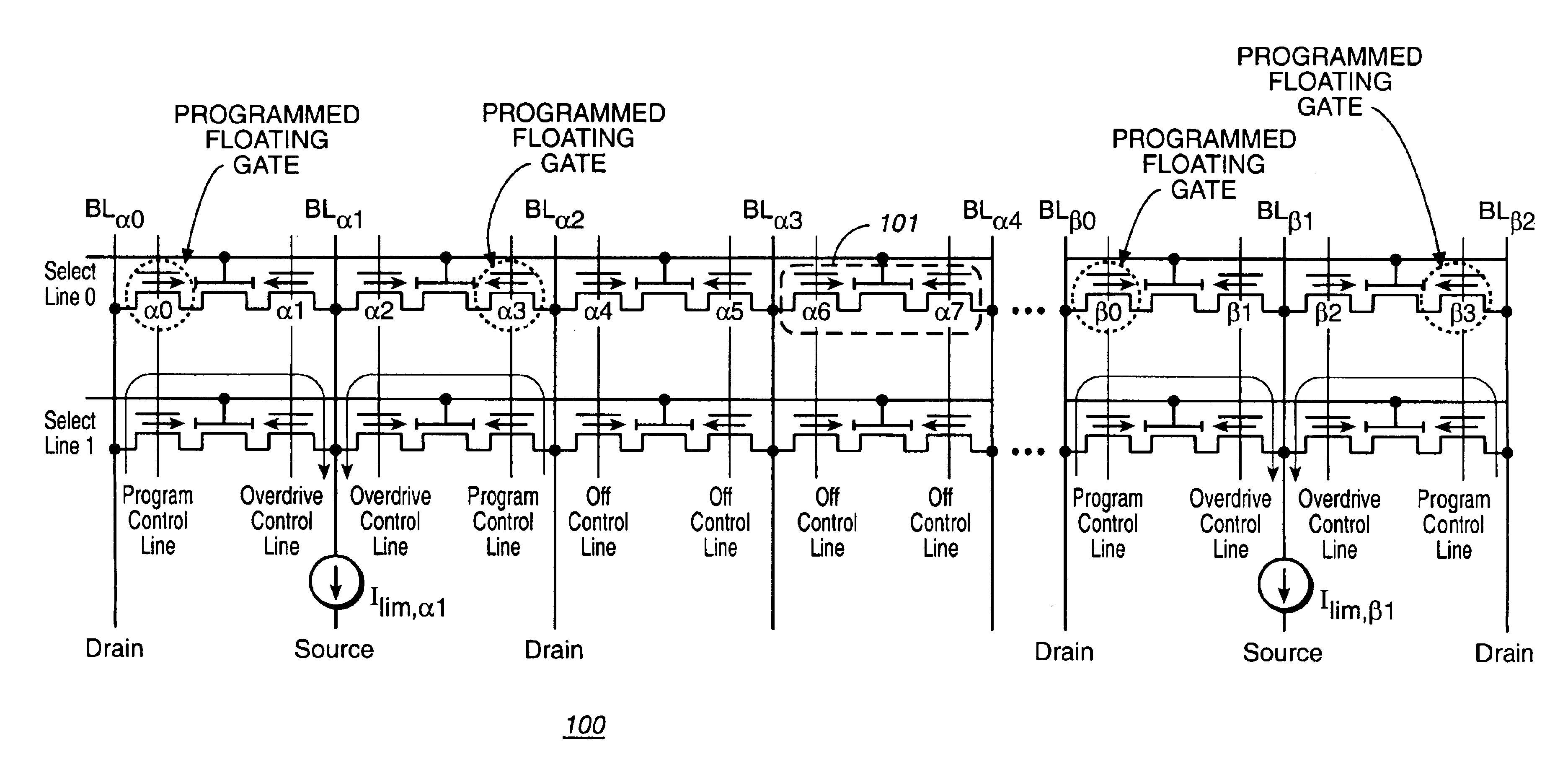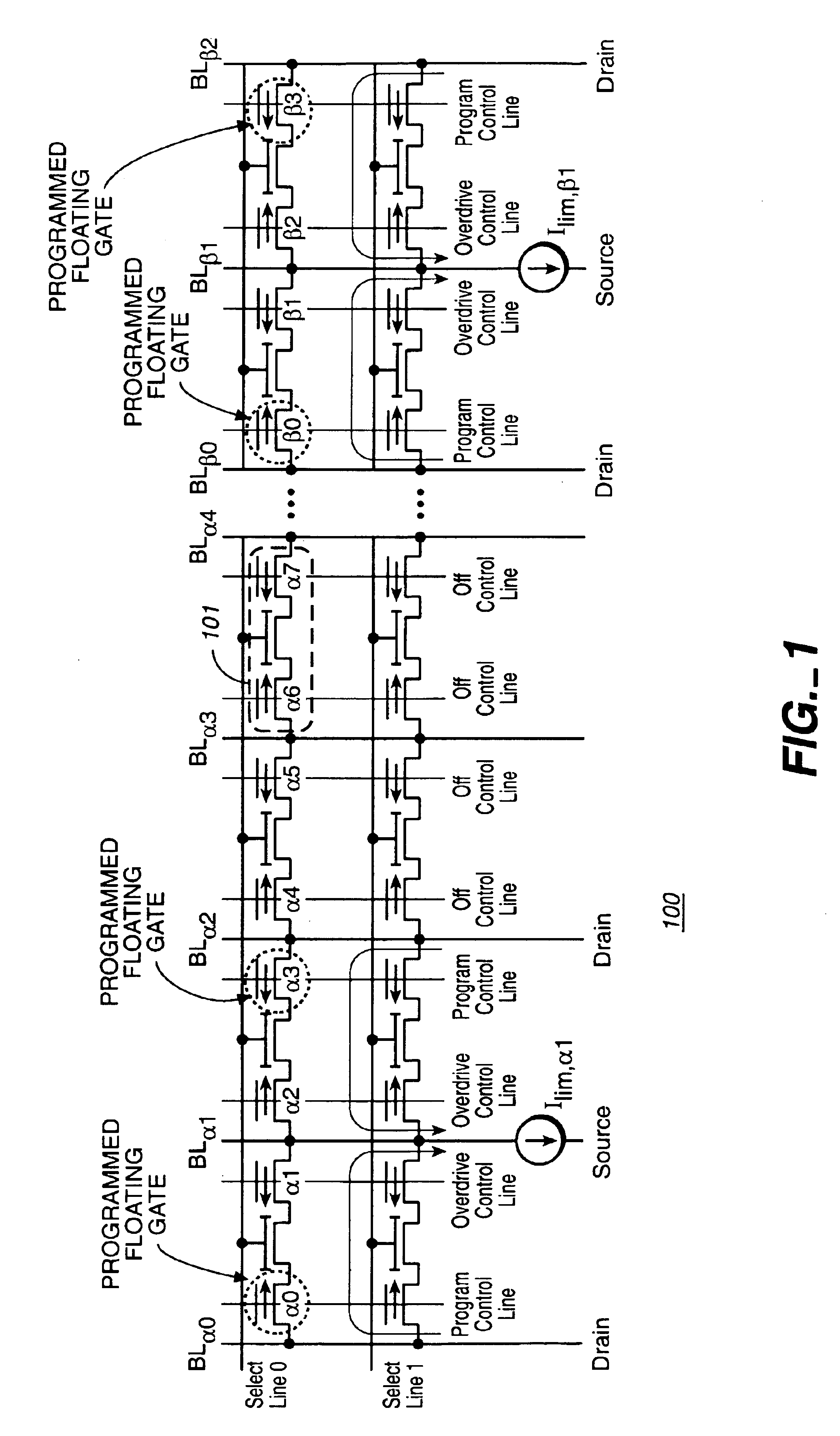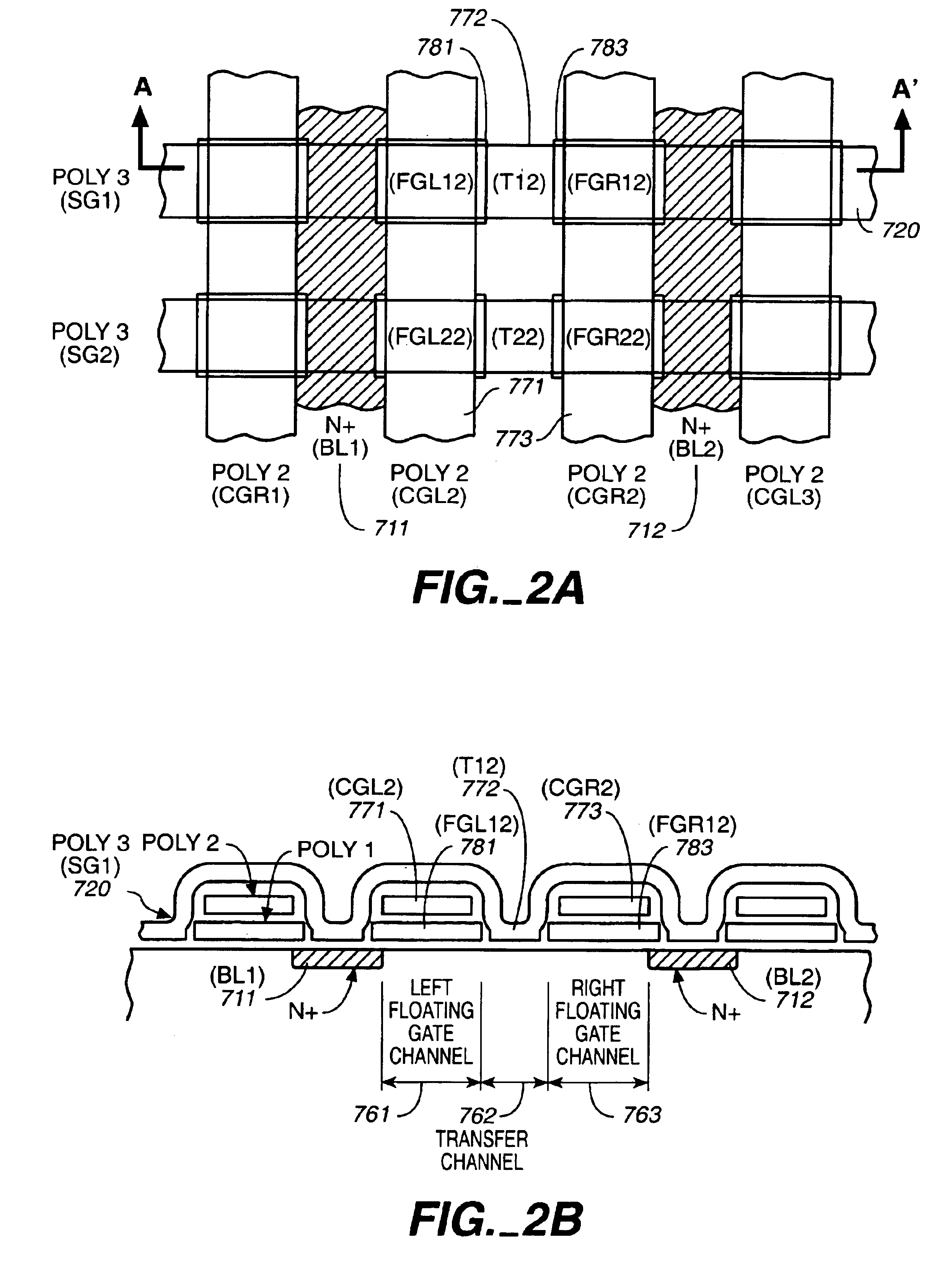System and method for programming cells in non-volatile integrated memory devices
a technology of integrated memory and programming system, which is applied in the field of non-volatile integrated memory devices, can solve the problems of increasing the power consumption of programming the large number of memory cells in a sector, further limitations on the ability to program large numbers of memory cells in parallel, etc., and achieves the effect of quick and efficient programming of hard-to-program storage elements
- Summary
- Abstract
- Description
- Claims
- Application Information
AI Technical Summary
Benefits of technology
Problems solved by technology
Method used
Image
Examples
Embodiment Construction
FIG. 1 shows an exemplary embodiment of a portion of a non-volatile memory array 100. In this particular embodiment, each storage unit is a dual floating gate EEPROM unit that is programmed by source side injection. For example, an individual storage unit 101 has floating gate transistors α6 and α7 on either side of a select gate transistor connected between bit lines BLα3 and BLα4 in a virtual ground arrangement. Two rows, connected to Select Lines 0 and 1, and two blocks, the α and β areas, of array 100 are shown in FIG. 1, with the actual array generally being much larger. The individual floating gate transistors can each store two or more data states.
The various aspects of the present invention are not particular to the specific type of array shown in FIG. 1, but this structure will often be used as an exemplary embodiment since it can readily illustrate many of the aspects of the present invention. As described in the Background section, current non-volatile memory systems ofte...
PUM
 Login to View More
Login to View More Abstract
Description
Claims
Application Information
 Login to View More
Login to View More - Generate Ideas
- Intellectual Property
- Life Sciences
- Materials
- Tech Scout
- Unparalleled Data Quality
- Higher Quality Content
- 60% Fewer Hallucinations
Browse by: Latest US Patents, China's latest patents, Technical Efficacy Thesaurus, Application Domain, Technology Topic, Popular Technical Reports.
© 2025 PatSnap. All rights reserved.Legal|Privacy policy|Modern Slavery Act Transparency Statement|Sitemap|About US| Contact US: help@patsnap.com



